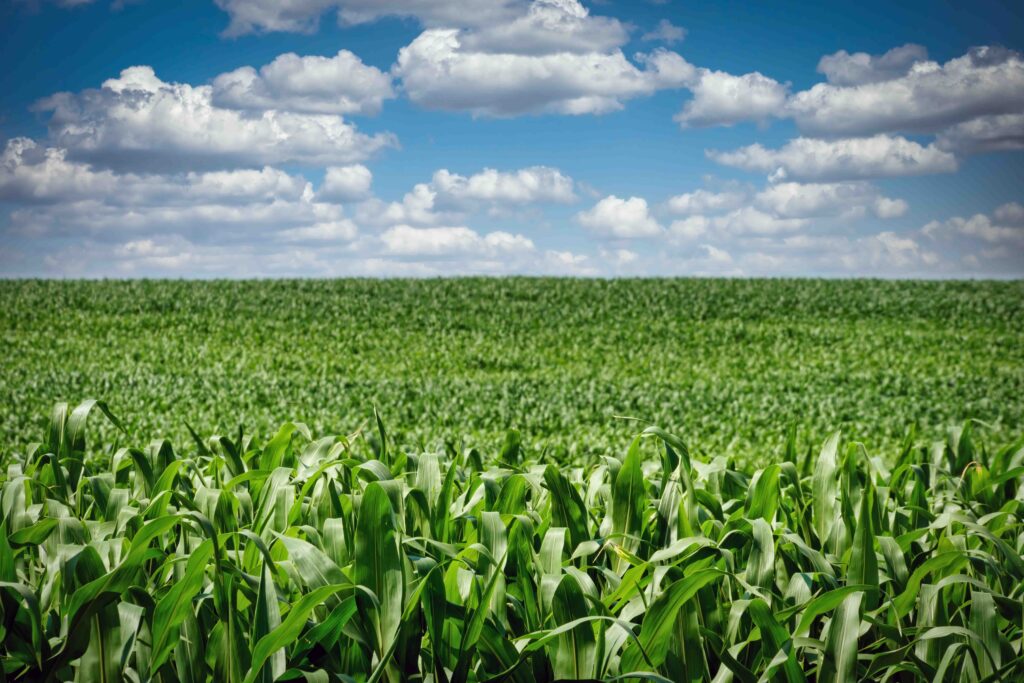 Authors: Dr. Lourival Carmo Monaco Neto, Postdoctoral Research Associate
Authors: Dr. Lourival Carmo Monaco Neto, Postdoctoral Research Associate
Dr. Allan W. Gray, Executive Director and Professor
Dr. Luciano Castro, International Affiliated Professor
Dr. Brady Brewer, Associate Director for Scholarship & Engagement and Assistant Professor
The idea of sustainability, in all of its forms, in the food and agricultural chains is not new, but it has recently gained a great deal of attention. One of the most important aspects of being sustainable is the adoption of agricultural conservation practices. By conservation practices, we mean practices such as nutrient management, 4R nutrient stewardship, reduced tillage, strip-till or no-till, cover crops, more diverse crop rotations, water management and other practices in the same vein. These practices play a critical role in reducing input use, improving soil health, enhancing water quality, sequestering carbon and reducing other greenhouse gas emissions. However, despite many of these practices showing promise in also reducing production costs and enhancing yields, adoption rates remain stubbornly low, ultimately limiting the desired sustainability impacts of these practices.
A study developed by Purdue University’s Center for Food and Agricultural Business and The Nature Conservancy sought to understand both agricultural retailers’ and farmers’ views and actions regarding conservation practices. The objective of this study was to explore the opportunities and challenges both farmers and agricultural retailers face in planning and adopting conservation practices. A key focus was to evaluate the role of agricultural retailers in fostering conservation practice adoption by farmers. The study also explored the potential for a business model for sustainability services that complemented the agricultural retailers’ current business model to better compete and maintain relevance in supporting the current and future conservation needs of their farmer customers.
This research was conducted by holding focus groups with different retail companies and their customers in different territories (Indiana, Ohio, Michigan, Illinois, Iowa and Nebraska). The idea behind the methodological choice of talking to both agricultural retailers and their customers was to explore the potential similarities or disparities between the two critical perspectives when conservation practice adoption is considered.
Many different and important insights were drawn from these conversations, such as:
- Retailers’ willingness to take the leadership role on conservation practice adoption – Farmers seem to be the ones demanding these practices, but retailers can provide equipment, supplies, technical advice and record keeping, and financial and evaluation assistance to ensure profitability and success. They can become the trusted advisors for sustainability and conservation practices.
- Creating evidence about conservation practice ROI – It is clear that farmers are willing to adopt conservation practices if it can be proven to them that there is some benefit from doing so. Other agents in the agricultural value chain need to be able to prove these practices are truly beneficial to farmers, the economy, the environment and society as a whole. Retailers, NGOs, universities and government agencies are some of the agents that should seek to provide this proof to farmers and retailers, as well as prove the value of these practices to society.
- Communication challenge: Conservatives or modern agriculture – There is clearly a barrier to conservation practice adoption when it comes to farmers’ and retailers’ perceptions on them. This means there are some farmers who are set in their ways of how they have been doing things for years or the ways they were taught by their predecessors. It is crucial to be able to change some of the existing bias toward what conservation means and what the results are of their adoption or non-adoption. The future will demand more sustainable food systems, and the value chain will have to adapt.
- Critical gap: Who is benefiting and who is paying? Is there a chance practices will be compensated? Supply chain opportunities and regulations – It is extremely important to understand who is benefiting from the use of conversation practices on American farms and to be able to clearly articulate this message to all stakeholders involved. On the flip side, we know someone will pay for these practices, even if this means investing in their development, proving they are beneficial or making them available to farmers. The most important aspect to consider is that there is value to be created, captured and shared across the value chain and society as a whole.
- Finding the influencers – If there is intent to stimulate the conservation practice adoption, it is important to understand if local retailer partners fit more of a challenger or follower profile. For the first group, the incentive should be to help them with technology and knowledge to reach the farmer more effectively. In areas prevalent with followers, either an effort to transform a follower into a challenger or a focus on getting farmers interested in these practices should be put into place, ultimately demanding specific information, products and services from their retailers.
These are simply a few of the many valuable takeaways found from the research conducted for this study. To learn more, view the recording of a webinar by the Purdue University Center for Food and Agricultural Business and The Nature Conservancy focused on the need and development of the study, additional insights learned and possible implications. Check it out here!




